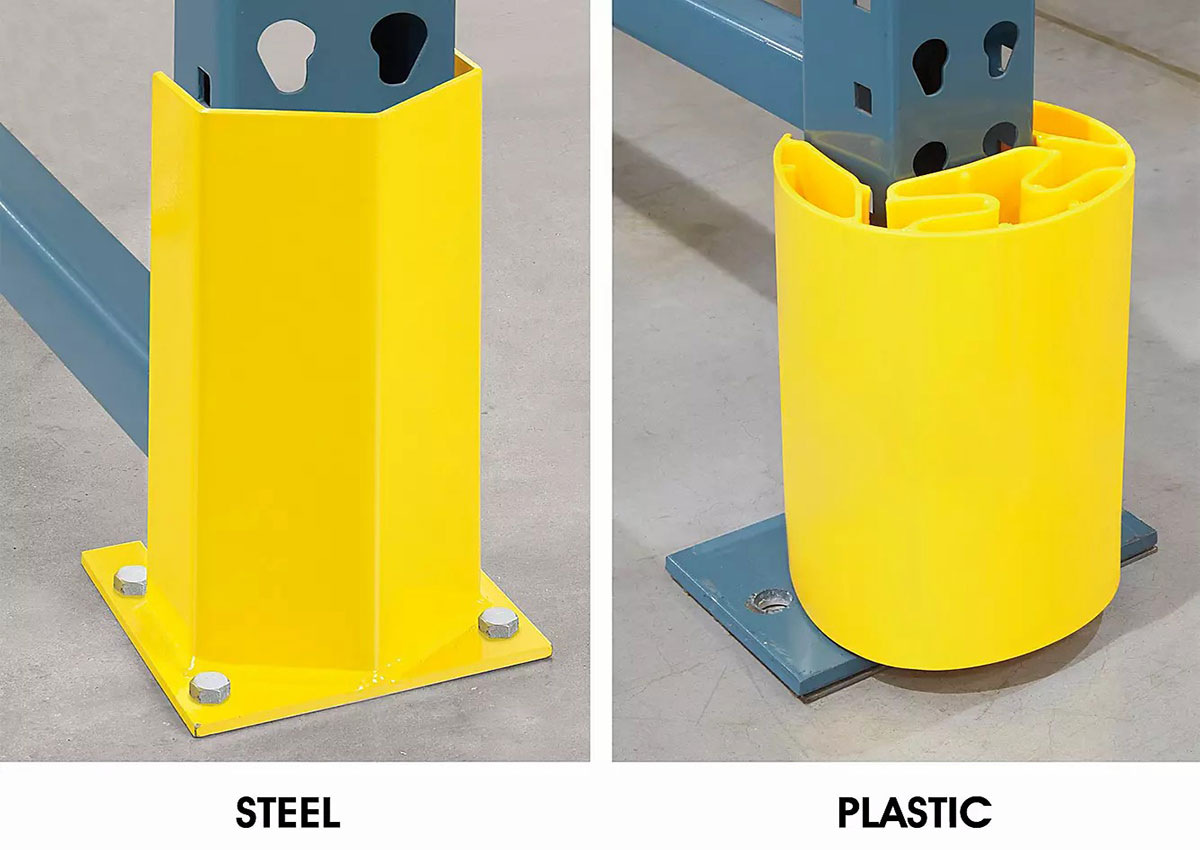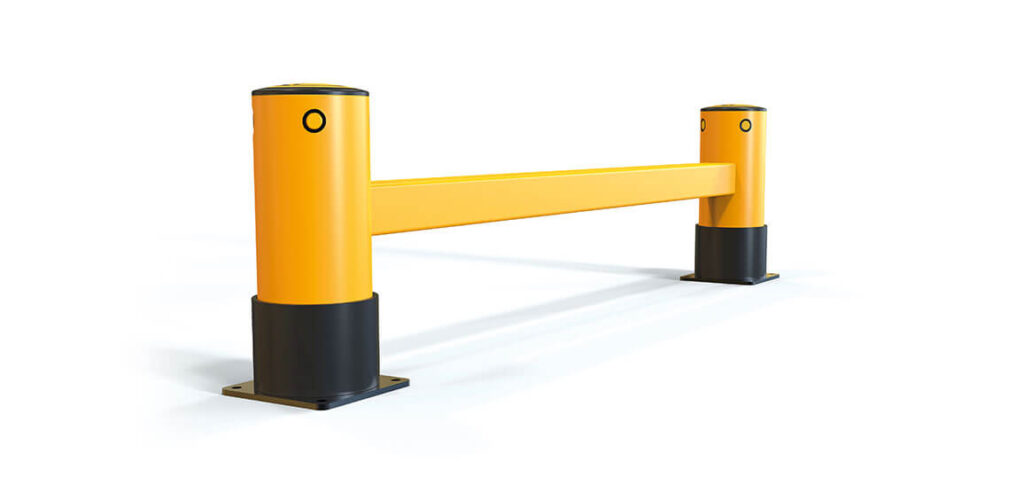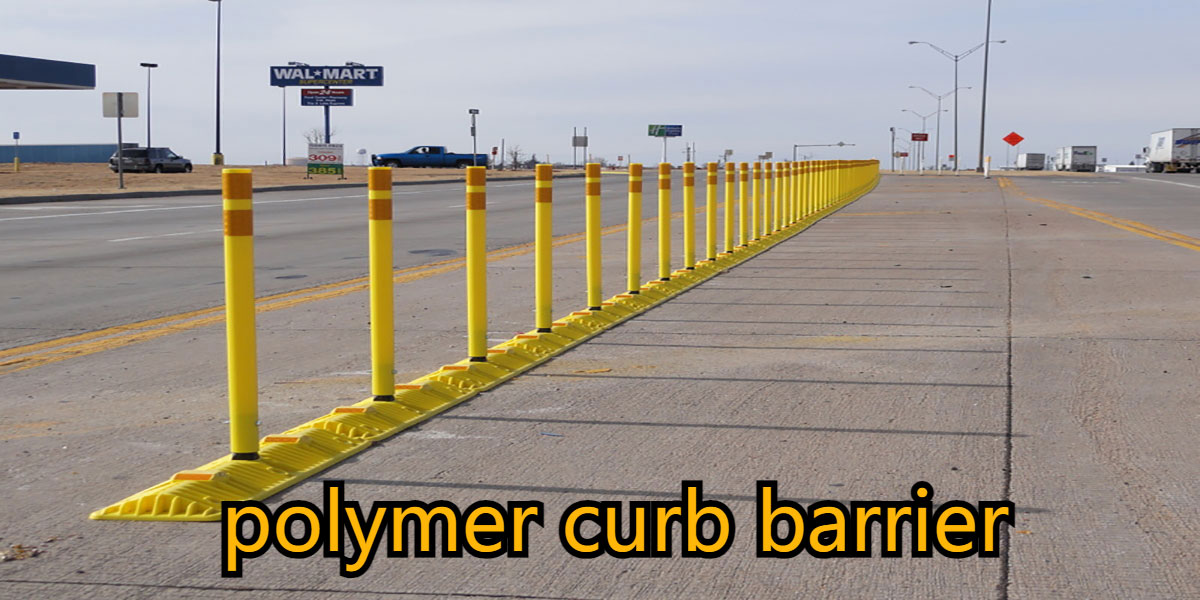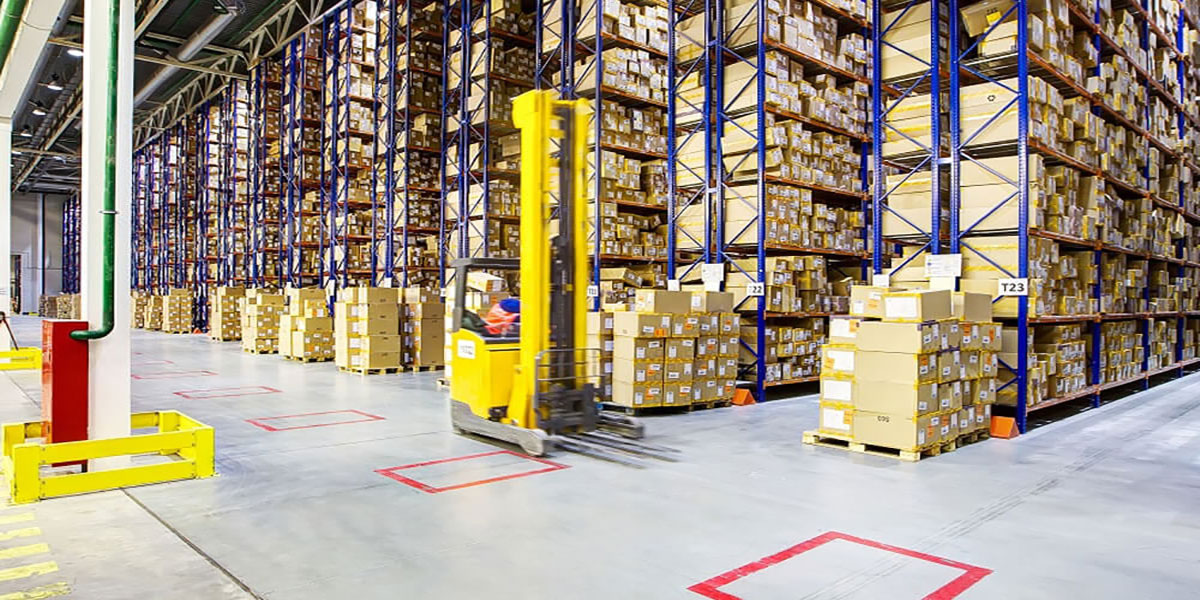Before researching which warehouse shelf protector to buy, it’s a good idea to understand what options are available. There are many types of shelf security systems, and this handy guide explores some of the most common types of shelf protection.
1. Rack Leg Protectors and Rack Column Protectors
A very common type of rack protection, rack leg protectors protect vertical rack columns from accidental impact from forklifts and other field vehicles. Vertical uprights are an extremely fragile part of warehouse racking; therefore, they require additional protection.
Rack leg protectors are usually purchased in bulk to protect each upright in a row of racks.
Rack leg protectors come in two main types:
- steel leggings
- plastic frame leg protector
1) What are steel leggings?
Steel leg guards usually take the form of small metal shields that protect the base of the vertical stand. These steel protectors are usually bolted to the ground and prevent field vehicles and forks from connecting with the bottom of the rack legs. While this provides useful protection, it does leave the rest of the rack column vulnerable to shocks and bumps.
Alternatively, there are steel leg protectors in the form of metal posts that can be bolted or attached to higher rack posts. This acts as a shield for the post when a vehicle is attached to it. However, if the impact is hard enough, it can destroy both the protector and the post itself.
2) What are plastic frame leg protectors?
When you talk about plastic frame leggings, you’re usually referring to polymer leggings. Polymer Rack Leg Protectors are made of strong yet flexible plastic that absorbs the impact of a vehicle crash and returns to its original shape.
Polymer protectors can be attached to rack posts, and in some cases, have a “snap-on” design, which means the protector grabs onto the rack legs, helping to provide effective protection while being strong enough to hold Support itself on various rack sizes.
Some polymer brace leg protectors are made from recycled materials, making them a more sustainable option than traditional steel.

2. Rack End Barriers for Heavy Duty Protection
Rack end rails are just like traditional safety rails in that they are effective at preventing vehicle impacts. They are positioned low and bolted to the ground at the end of a row of racks, as these areas are most vulnerable to vehicles turning into the aisle between the rows of racks.
There are two main types of end-of-rack barriers:
- steel
- polymer
1) What is a steel shelf end guardrail?
Rack end rails made of steel can provide some protection at the end of the rack as they protect the rack and absorb impact. However, steel guardrails are not immune to vehicle crash damage. Even a moderate impact can cause the steel barrier to be damaged, destroyed, or even torn from its foundation.
Even in the event of a crash, steel end rails will most likely need repair or maintenance. In most cases, steel guardrails will need to be replaced after impact because the structural integrity of the guardrail may be compromised, even if the damage appears to be only superficial.
Additionally, steel guardrails are prone to rust if they are scratched or marked by minor contact with vehicles on site.
2) What is a Polymer End Barrier?
When specified properly, polymer rack end rails can provide higher protection than steel rails. Vehicles collide with them and impact forces are dispersed without causing damage or transferring impact energy to the floor.
The polymer material is more flexible than steel, so it can bend under impact and return to its original shape without damaging the barrier’s structural integrity. Due to this feature, polymer barriers are more cost-effective and longer-lasting than other end-of-rack barriers. They can withstand repeated impacts without weakening, whereas steel is more likely to deform after impact or be twisted from the concrete foundation.
If the impact is large enough, whether it is speed or weight, it may break through the safety barrier. So, whether you choose steel or polymer, strict regulations on vehicle speeds and load weights must be enforced within your facility.

3. Curb Barriers for Fork Protection
Curb rails are designed to stop the forks of material-handling vehicles from jamming racks or puncturing valuables. They are designed to provide ground protection for shallow-angle impacts. They are often used in conjunction with traffic or pedestrian barriers to prevent forks from passing under the rails.
These guardrails are solid steel or polymer curbs bolted to the floor, rather than the traditional guardrail style consisting of railings and end posts. The solid design means there are no gaps for the forks to penetrate.
1) What is a Steel Curb Guard?
To prevent vehicle forks from connecting with racks and racks, steel curb rails are bolted to the floor. Although they can provide reasonable impact protection, they have the following problems:
- They deform on impact and need to be replaced
- they will rust
- They need to be constantly repainted to make sure drivers can see them
2) What is a polymer curb barrier?
Like most polymer protection products, polymer curb barriers are designed to withstand multiple impacts without damage or ruin. The dense polymer material flexes and returns to its original shape with impact, making it ideal for long-term protection.
Often used in conjunction with rack-end guardrails, polymer curb barriers fill the void beneath the guardrail to prevent ground impacts.

4. Rack Monitoring Technology for Advanced Automated Protection
A relatively new development in shelf protection is the electronic shelf monitoring system. The technology works by collecting rack impact data in real-time, allowing you to identify impact trends and hotspots within your facility. This allows you to take proactive steps to reduce the risk of future impacts.
1) What is Rack Monitoring Technology?
This refers to a series of sensors fixed evenly along the shelf. These sensors detect when a shelf is affected and send electronic results back to the computer of a warehouse manager or other senior executive. This allows the person in charge to see where the rack is damaged and make quick and safe repairs or replace the rack in that area.
2) What is the benefit?
Electronic rack damage systems allow managers to monitor rack damage over time. In this way, the system can provide detailed information about what areas of warehouse shelves are most vulnerable. Armed with this data, it becomes easier to upgrade protection levels in these specific areas or to increase driver awareness through better on-site signage and visual indicators.
3) How does this create a safer workplace?
The purpose of shelf monitoring technology is not only to notify warehouse managers when damage occurs but also to help encourage a culture of safety among employees, thereby reducing the occurrence of shelf collisions.

5. Summary
There are a range of protection systems for warehouse racks, but it’s important to understand what they do, how they work, and the benefits they provide. By taking the time to research, you can ensure that your site protection is strong enough to deal with potential impacts without further incurring unnecessary costs.





Leave A Comment